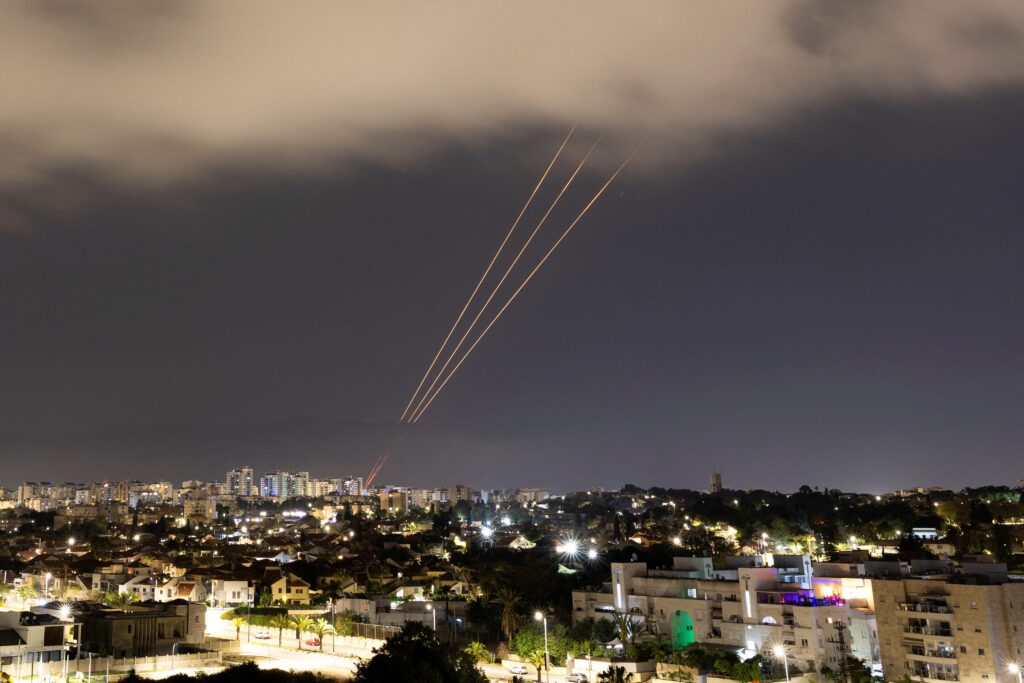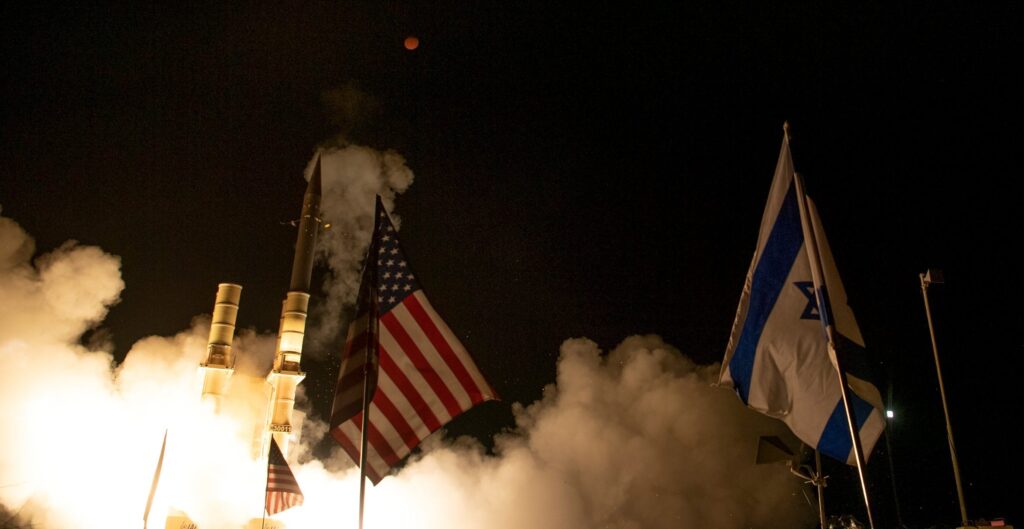- Both the US and Israel used weapons capable of killing missiles in space to fend off Iranian weapons last weekend.
- Videos online showed an apparent exo-atmospheric intercept from the attack.
- Exo-atmospheric kills are impressive because of how difficult it is to find, hit, and destroy missiles in space.
Both the US and Israel used weapons capable of killing missiles in outer space to fend off Iran's massive strike over the weekend.
The US has confirmed that both the US Navy's SM-3 interceptor and Israel's Arrow were involved in the engagement. Videos circulating online from the fight appeared to show an exo-atmospheric kill, though details are few.
Intercepting a ballistic missile outside the Earth's atmosphere is a challenging task, an expert told Business Insider.
Footage of the suspected exo-atmospheric interception of an Iranian missile first appeared online Saturday night, shared by open source information accounts on X. It was unclear what exact weapon was used, although speculation was that it could have been Israel's Arrow system, a key part of its layered air defense network.
Another video posted by a defense correspondent for the Times of Israel seemed to offer a clearer look at an exo-atmospheric interception. It is unclear whether this was the same kill seen in the first video or a separate event.
Neither the US Department of Defense nor the Israel Defense Force immediately responded to BI's request for comment on what is thought to be a missile kill beyond the atmosphere.
An exo-atmospheric interception, which is when an interceptor strikes a ballistic missile and destroys it before it can re-enter Earth's atmosphere, is "impressive for several reasons," Dr. Sidharth Kaushal, a research fellow at the Royal United Services Institute, told Business Insider.
First, the complex process requires gathering data about the missile, in this case an Iranian ballistic missile fired towards Israel in an unprecedented attack, in its midcourse phase of its flight, when the speed is the highest.
"This is both complex in terms of long-range tracking, but also target discrimination," Kaushal said, adding that at that point "the second stage boosters and body of the missile separate from its warhead, which generates a challenge in terms of discriminating the warhead from other radar returns."
Another consideration is the speed of the missile during this stage. Because it's going so fast, it "imposes considerable demands in terms of interceptor speed and maneuverability in order to achieve a kill," he added. It also requires precise accuracy.
Once a ballistic missile has re-entered the atmosphere, it can be easier to track and target it, but at that point, there is potentially less reaction time for another interceptor, which may be strained by other demands, to respond.

The US military assets in the region and Israel have a few capabilities able to target ballistic missile threats in outer space.
For Israel, the Arrow system, which consists of Arrow 2 and 3, is a key air-defense capability. Arrow 3 was deployed in 2017 and achieved its first confirmed kill back in November 2023 against Houthi ballistic missiles. It was an upgrade from Israel's Arrow 2 system, which was deployed in 2000.
Both of Israel's Arrow systems can intercept short- and medium-range ballistic missiles, but while Arrow 2 was built to eliminate threats in the upper atmosphere, Arrow 3 is able to execute missile intercepts in space, according to The Center for Strategic and International Studies, a Washington DC-based think tank.
A senior US military official said that Arrow played a key role in stopping Iranian ballistic missiles, explaining that "the majority of those missiles were engaged by the Arrow system — Arrow 2 and Arrow 3 — in Israel."
But US warships and fighter aircraft were also involved. On Tuesday, the US Navy confirmed it fired a Standard Missile 3, or SM-3, against Iranian ballistic missiles, the first time the weapon has been used in combat. The SM-3 is also capable of destroying short- to intermediate-range ballistic missiles during the midcourse phase and can hit targets outside the Earth's atmosphere.
SM-3s are unique in that they are the only one of the Navy's Standard Missiles "designed to operate in the vacuum of space," CSIS said in its Missile Defense Project.
